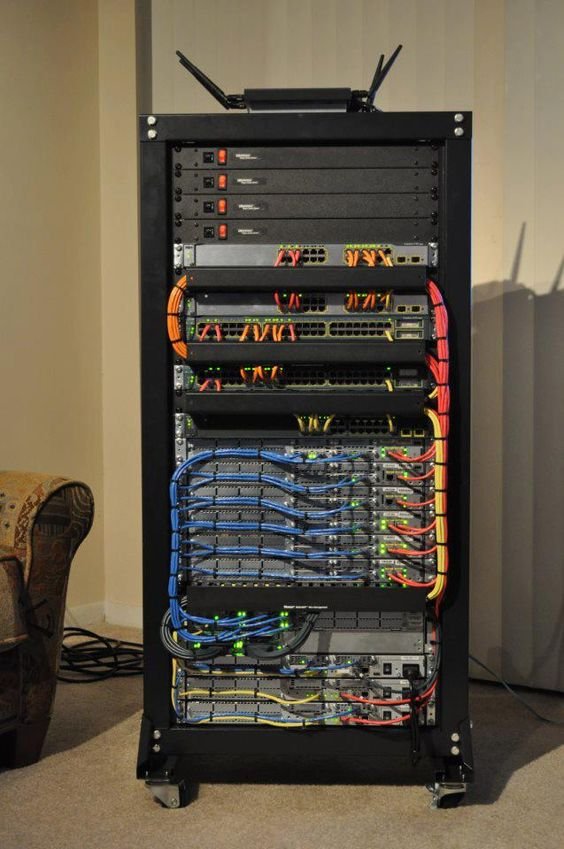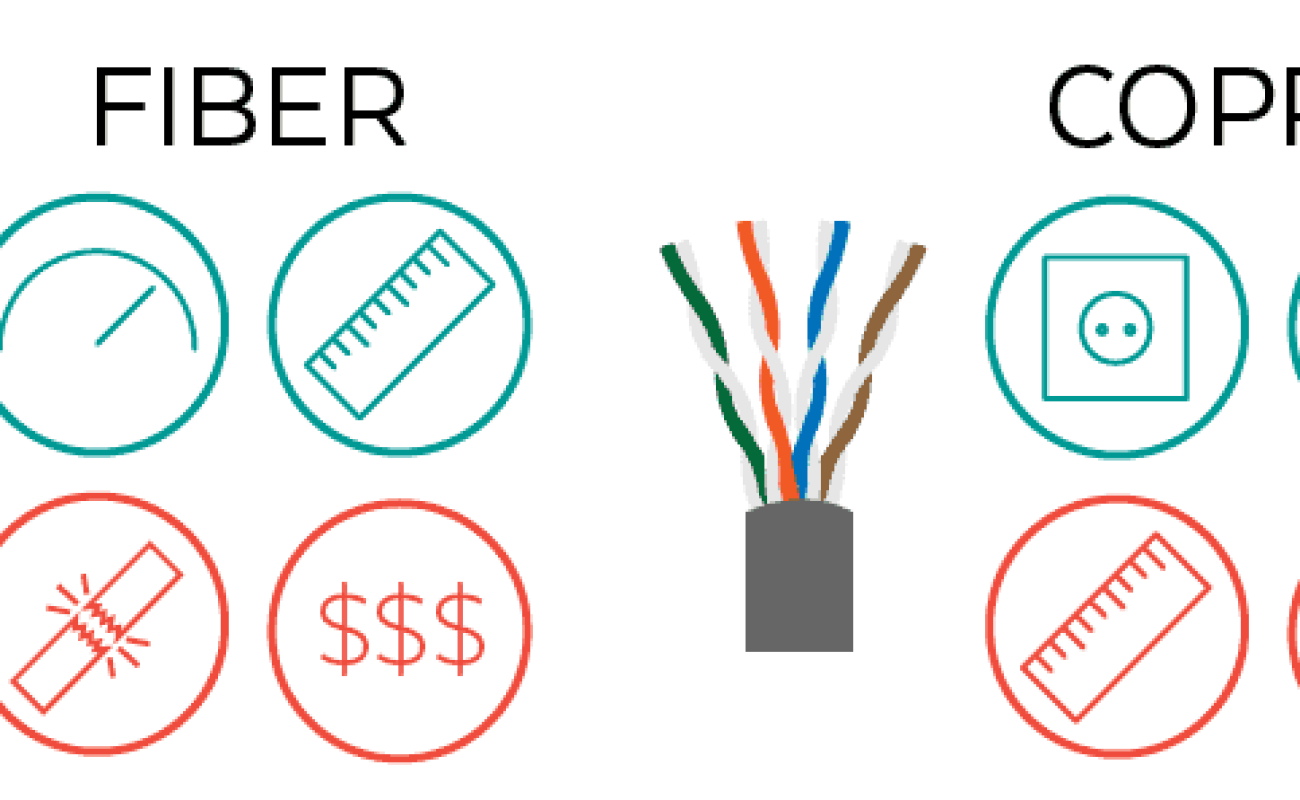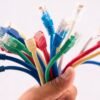Although fiber optic cables are more widespread than copper cables from 4G onwards, is it cheaper than copper cables in cost?
Well, this is not the case. Some scenarios may need optic fiber, but others may need a copper cable for serving the purpose. Furthermore, both of these have many types, with different specifications for each. So, the price may vary.
Continue reading the article to have a better knowledge about the price range of the two cables.

Fiber Optic Cable Pricing:
The fiber optic cable cost can vary from $1 (for 24 counts) to $6 (for 288 counts). Yet, if you want to install the complete system in your building, there are certain extra charges, which depend upon the factors such as:
Area/Size of the building:
Buildings or larger enterprises will need a fiber optic cable with a more significant count number to manage all the connections.
Physical Obstacles:
If there are obstacles such as a water stream or requires any digging to make the fiber cable reach your desired point, then the cost will vary.
Distance from the closest lit fiber:
The distance from the nearest available fiber optic cable single in your vicinity determines the bill that you have to pay for it. So, the cost will not go up much if the area in your surroundings is fiber-lit. Yet, the price may go up to a large scale if there is no optic fiber connection available nearby.
Scenarios for Optic Fiber Usage:
Have you ever wondered how you receive text messages on your cell phone within a blink of an eye? Thanks to the fiber optic cable network laid underground and under the sea, all this is possible. These cables have a vast range of applications, some of which are as follows:
Medical Field:
Fiber optic cables are used for imaging during complex surgeries and act as a medium for light travel.
Data Transmission:
These cables transfer data over large distances because they offer less signal loss. These lines also assist in the sending and receiving of data.

Industrial Use:
Many unreachable areas in the commercial sector need imagery to make wire connections. Optic fiber cables tackle such issues by making different temperature or pressure measurements.
Defense:
Fiber cables are used as hydrophones in SONAR. They also assist in the identification of different minor yet sensitive issues in-plane or submarines.
Optic Fiber Specifications:
Unlike copper cables, fiber optic cables use light pulses for the transfer of information. Optic fiber cables are of two main types, each with different specifications, and used according to the user’s need. These types, along with specifications, are as follows:
Types of Optical Fiber:
The two types of optical fiber:
· Plastic optical fibers
· Glass optical fibers
The comparison among the specifications of the two types is shown in the table below:
| Glass Optical fiber | Plastic Optical Fiber |
| Made from Silica | Made from PMMA |
| Data transfer rate 100 Mb/s | Data transfer rate 2.5 GB/s |
| Delicate and brittle | Harder and is not broken when bent |
Can resist high temperature | Resistant to high temperature |
| Offers low signal loss | Offers greater signal loss |
| Expensive | Cheaper than glass optical fiber cable |
Copper Wire Pricing:
The cost for installing a complete copper wire transmission system depends upon the length of wire required. It also depends on the cable quality that you are using. The per meter cost of the three significant types of copper cables is as follows:
Twisted Pair Cable:
Twisted pair cable cost varies depending upon the build quality. But usually, you can get it in the range of $0.2-$0.5/meter
Multi-conductor flat cable:
The multi-conductor flat cable price varies depending upon the build quality. But usually, you can get it in the range of $0.34-$7.40/meter.
Coaxial Cable:
Coaxial cable price varies depending upon the build quality. But usually, you can get it in the range of $0.6-$12.00/meter.
Scenarios for Copper Wire Usage:
Due to its property being an excellent electrical conductor and small resistance, a copper wire has a vast range of applications. Some of them are:
Electromagnets:
Copper wire forms electromagnets. These electromagnets form advanced locks and are also used in scrapyard cranes to lift heavy loads.
Motors:
All the electrical motors need a primary component, i.e., copper wire. These motors play a vital role in washing machines, fridges and act like a car’s starter. The engines are also using in disc drives, fans, etc., of a computer.
Transformers:
An electric transformer is a device used to vary the voltage received into a more excellent or a smaller value and then transfer it. These transformers are also made out of copper cables and used in electricity stations, adaptors, and power stations.
Telecommunication:
Copper cables can send information in the form of electrical signals. Twisted pairs, multi-conductor flat cables, and coaxial cables are vital in the telecom sector.

Copper wire Specifications:
There are three basic types of copper cables used in the telecommunication sector for the transfer of data. These are:
· Twisted pair cable · Multi-conductor flat cable · Coaxial cable
The specifications and a brief comparison of these three types are as follows:
| Twisted Pair Cable | Multi-conductor flat cable | Coaxial cable |
| It consists of two insulated wires that are twisted around each other to form a spiral | It consists of multiple wires that are parallel to each other and held together in a jacket | It consists of a solid conductor surrounded by a plastic insulator and a shield made out of fine wires |
| Used between telephones and the exchange | Used in telephone exchanges | Used to build the connection of radio receivers and transmitters with their respective antennas |
| Unable to carry large amounts of data | Can take more data than twisted pair | It can carry a large amount of data in the form of radio signals |
| Cheap | Expensive than twisted pair | Expensive |
| Brittle; can be twisted and bent | It can be turned and bent | Stiff, not bendable |
Comparison of Fiber Optic Cable and Copper Wire:
· Data transmitted through a copper wire faces signal loss or attenuation over large distances. Yet, fiber optic cable transmits the same information without much loss over large distances.
· Fiber optic cable carries data faster than copper cables. It is due to its higher frequency carrying capacity.
Although copper wire is using because of its lesser cost, fiber optics always come up on top for various applications.
Related Questions:
What are the disadvantages of fiber optic cable?
Fiber optic cable is tough to splice. There may also be a large amount of data loss in this cable due to light scattering. It is expensive and breaks if twisted or bent. The installation of a fiber-optic network requires specialists.
How do fiber optic cables work?
Fiber optic cable works on the principle of ‘total internal reflection.’ Whenever light strikes on a surface, it is either reflected or refracted. Light enters the line at such an angle in an optic fiber reflecting and continues reflecting throughout the cable’s length. Light pulses transfer data from the transmitter to the receiver in a fiber optic cable.
Ending Remarks:
Although copper wire is cheaper than a fiber optic cable, fiber optic is a better option for efficiency. Specific applications need copper cables because of their specifications and vice versa. Researchers claim that soon fiber optic cable would take over almost all the applications around the world. Who knows, the cost of fiber optic cable may become lesser than copper cable one day!










